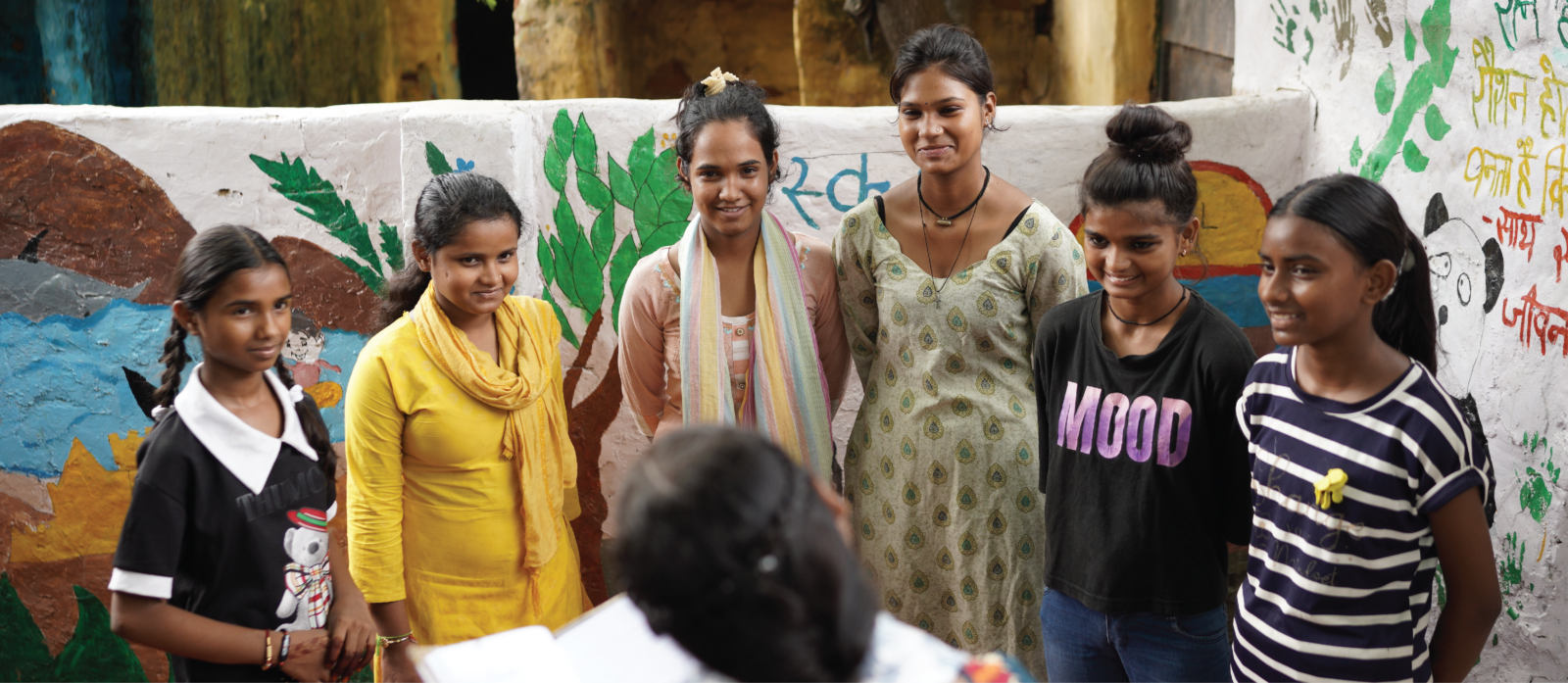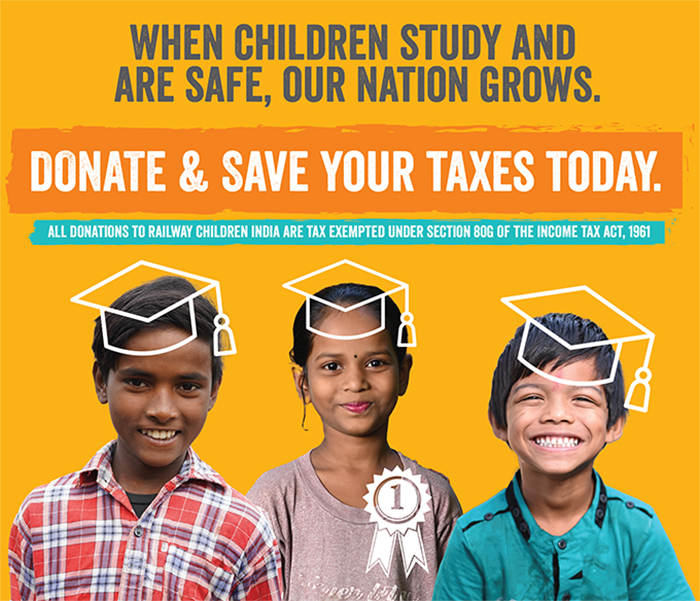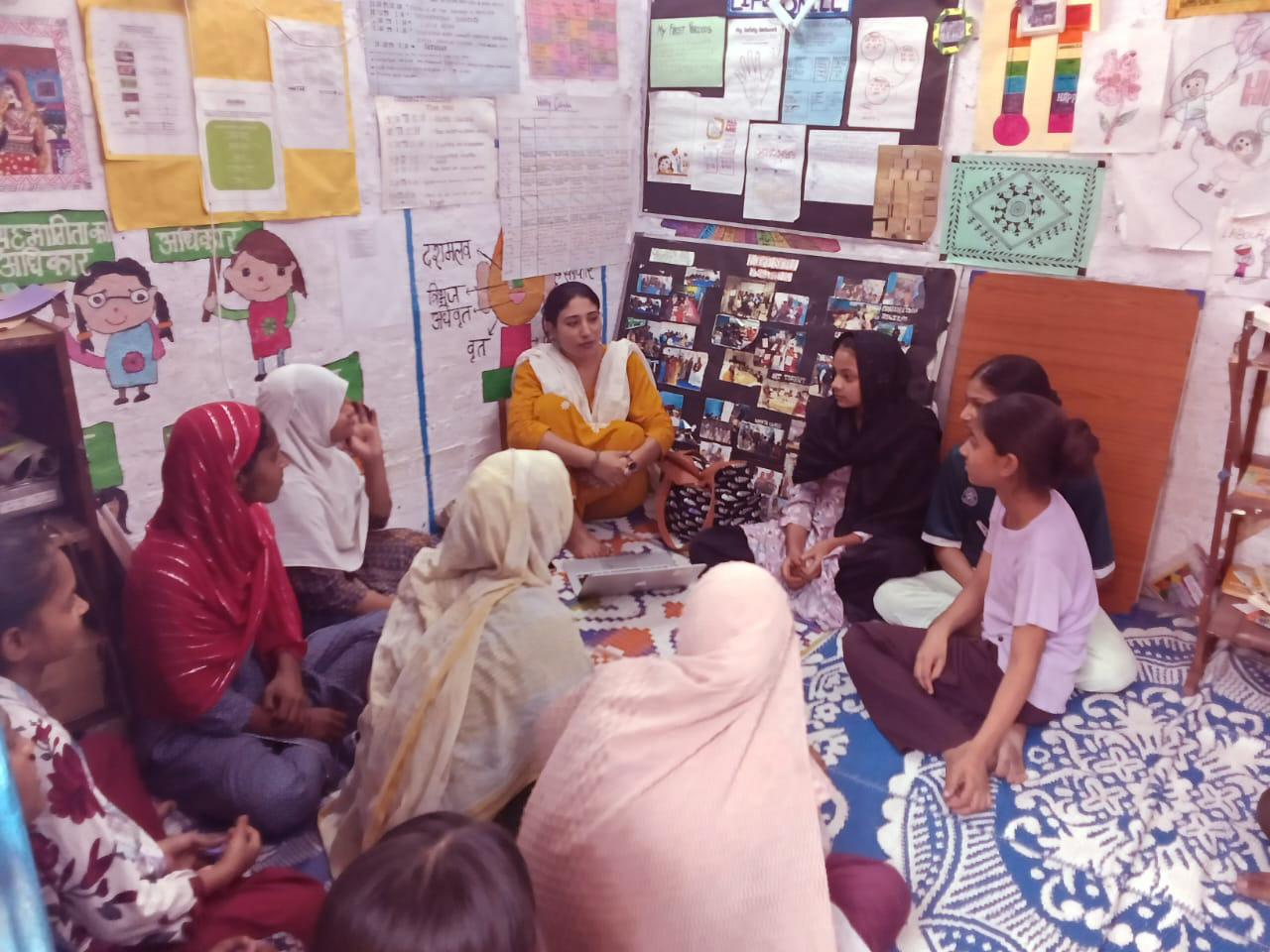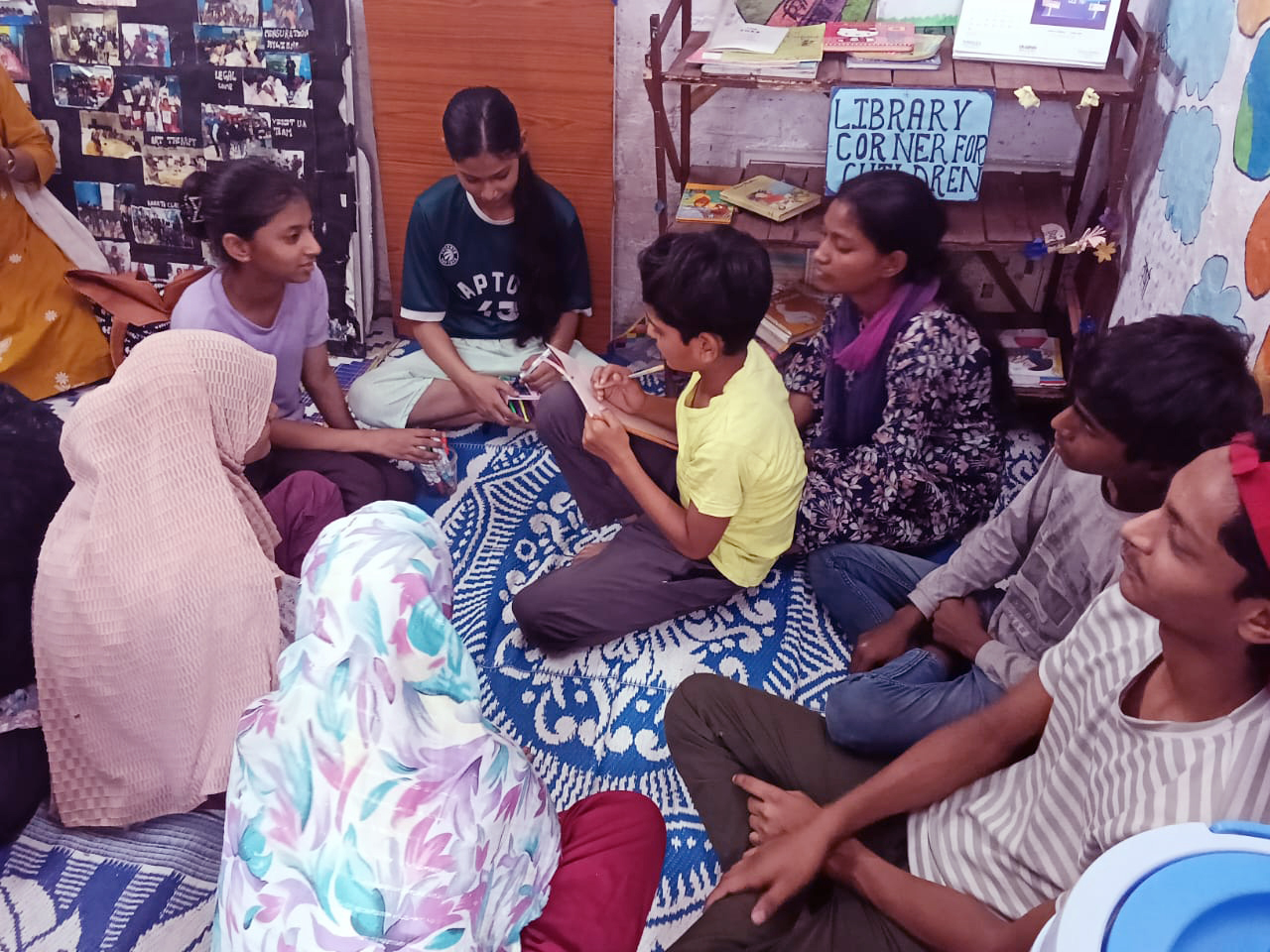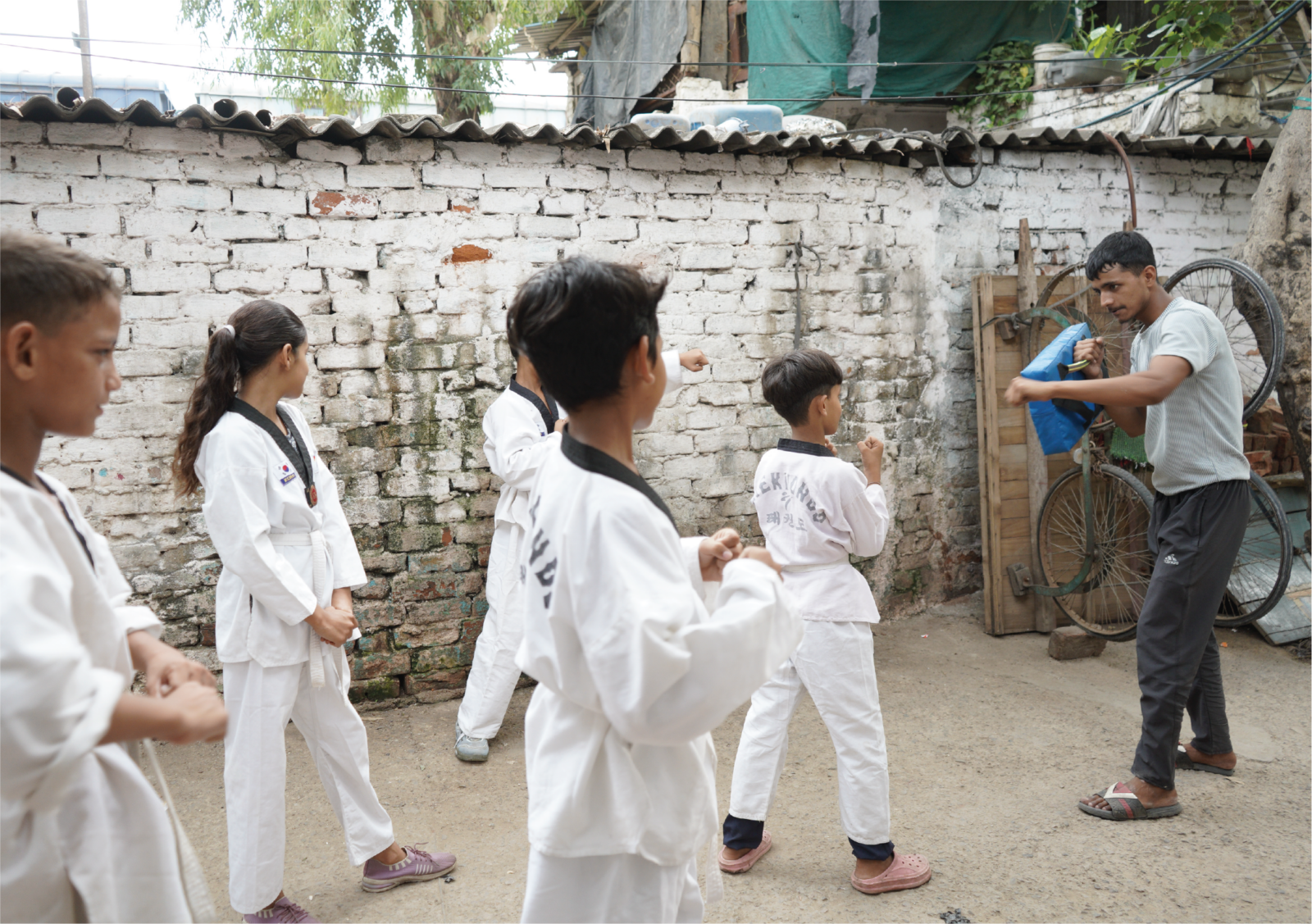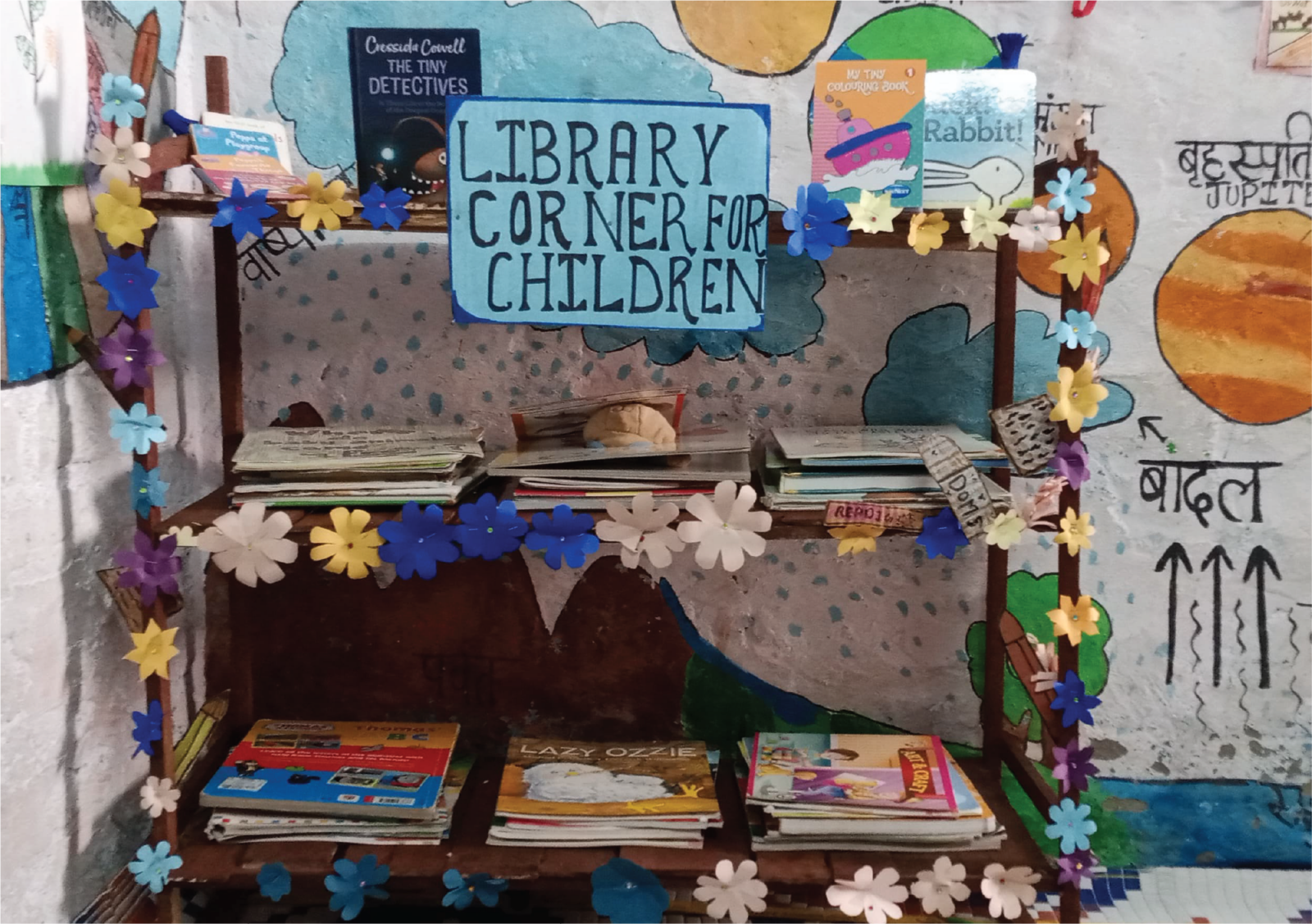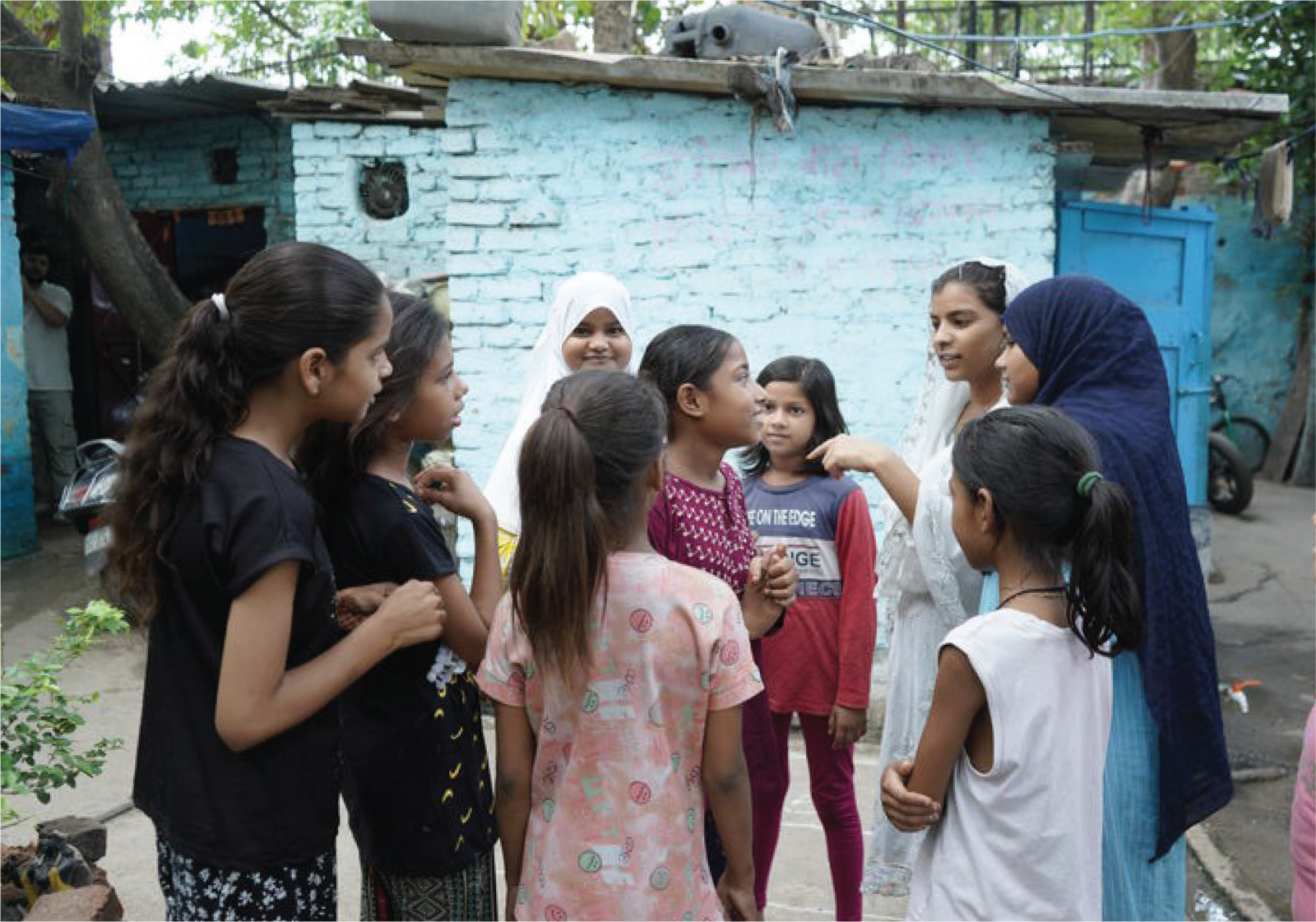Talk about adolescence and the topic of peer pressure is bound to find a way in the discussion. But what does peer pressure truly mean to young people growing up in tightly knit communities like Tulsi Nagar? In a recent session facilitated by Ms. Aisha Shameen, Training Officer at Railway Children India (RCI), the concept of peer influence was unpacked in ways that were both eye-opening and deeply relatable for 16 young participants—11 girls and 5 boys.
“Intentionally, we held the session with a mixed-gender group to encourage open dialogue and mutual understanding” explains Ms. Shameen.
Peer Influence: The Good, the Bad, and the Real
The discussion began by defining peer influence and distinguishing between its positive and negative forms. Adolescents were quick to admit that many of their decisions are influenced by their peer groups — sometimes for better, and sometimes for worse.
Honest confessions about wanting to try their hand at smoking or trying substances only to not lose their friends set the tone for an in-depth discussion on how peer influence can feel overwhelming.
The group explored how peer pressure can lead to experimenting with substances or risky behavior, while also highlighting how it can be a force for good, encouraging better study habits, participation in activities, or standing up against bullying. The teens shared personal examples where friends helped them improve or protected them from harm, clearly showing they could differentiate between positive and negative influences.
The Scenario Game
An engaging group activity followed. Two groups were given two real-life scenarios:
- A friend urges them to skip school to hang out at the mall.
- A peer pressures them into trying a cigarette.
The responses were both telling and surprising. In the first scenario, three adolescents admitted they would skip school, citing the desire to not seem boring or left out. The rest hesitated, admitting their fear of parental consequences kept them from taking that risk.
In the second scenario, the response was a unanimous rejection of smoking. This moment revealed an important insight — while some forms of peer pressure still have sway, others are losing their grip thanks to increased awareness and education.
Foresight Over FOMO
A key takeaway from the session was the importance of foresight. Ms. Shameen encouraged participants to pause and consider the long-term impact of their decisions, beyond the fleeting thrill of fitting in. The teens began to reflect on how every choice made under peer pressure could shape their future in ways they hadn’t thought about before.
By the end of the session, there was a visible shift in perspective. The participants could categorically articulate the differences between helpful and harmful peer influence, and many left feeling more confident in their ability to say “no” when it matters most.
